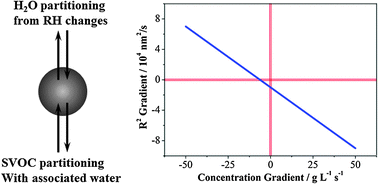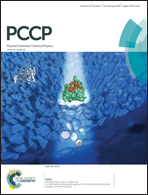A new approach to determine vapour pressures and hygroscopicities of aqueous aerosols containing semi-volatile organic compounds
Abstract
We present a new approach to study the equilibrium gas-particle partitioning of volatile and semi-volatile organic components in aqueous aerosol, deriving a correlational analysis method that examines and interprets simultaneous and correlated fluctuations in particle size and composition. From this approach, changes in particle size driven by organic component evaporation can be clearly resolved from size changes driven by hygroscopicity and fluctuations in environmental conditions. The approach is used to interpret measurements of the evaporation of semi-volatile organic components from binary aqueous/organic aerosol and the hygroscopic growth of involatile inorganic aerosol. The measurements have been made by the aerosol optical tweezers technique, which allows the simultaneous retrieval of particle size and refractive index with high accuracy. We suggest that this approach will be particularly valuable for investigating the thermodynamic behaviour of mixed component aqueous aerosol and will allow the accurate derivation of solution phase equilibrium properties that are prone to large uncertainties when measurements are made simply of the change in particle size with gas phase relative humidity.


 Please wait while we load your content...
Please wait while we load your content...